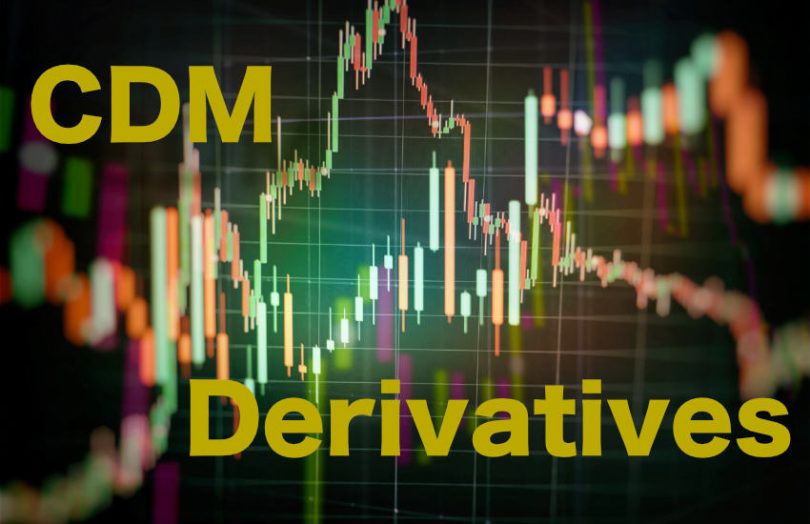This is a guest opinion post from Leo Labeis, CEO of REGnosys.
Over the past decade, building a more efficient and robust post-trade processing framework has become a key priority for financial institutions. Technology has played a central role in this transition, with firms increasingly turning to digital solutions to tackle the complexity and volume of post-trade operations.
The Common Domain Model (CDM) and blockchain – or distributed ledger technology (DLT) more generally – are two of the most promising technologies to emerge from this transition. The CDM is a standardised, machine-executable model of how financial products are traded and managed through their lifecycle. ISDA has been developing the CDM for derivatives in open source since 2019. Both technologies have the potential to radically streamline post-trade operations and could save firms huge costs.
However, it is important to recognise the different purposes that the CDM and DLT serve in this equation. To fulfil their potential of transforming the post-trade landscape, these two technologies must remain distinct and independent of one another.
How are the CDM and DLT different?
For DLT, bringing efficiency to post-trade processes is one of its promised applications in capital markets. For the CDM, this is its raison d’être.
In short, DLT provides a form of database, whereas CDM is a logical model for the data in question. The CDM provides a representation of trade event data as well as the functional logic that sits on top of the data. Not only that, it distributes it as machine-executable code. This includes the state-transition logic for generating and processing trade events.
This form of “smart contract” is where the lines separating DLT and the CDM can become blurred. In the world of post-trade, a smart contract is a computer program that is intended to automatically execute, control and record post-trade events. Any smart contract implementation needs a stack of three components:
- A database or ledger, which is where the DLT sits
- A “coded” representation of contracts recorded on the ledger, which is where the CDM sits
- Application(s), which operate as the interface between users (human or machine) and the ledger.
These three components must remain separate to ensure the interoperability of the post-trade processing infrastructure. The current post-trade landscape is inefficient precisely because all three components have been merged into one at every point in the trade lifecycle. This means that there is little to no interoperability between different parts of the data flow in today’s processing mechanisms.
Building a flexible future
In the future, trade processing will need to be fluid, with different processes co-existing on- and off-chain. Financial institutions will need to hop on and off easily as required, with guaranteed consistency of the coded contract. Even when functioning purely on DLT, different trade processes will have a variety of requirements regarding throughput or privacy, which may be suited to different chain protocols.
To ensure that this movement remains frictionless, the DLT, CDM and applications must remain separate. Otherwise, it would be like bundling your TV and internet service provider all into one – and then trying to navigate between Netflix and Disney+.
How can the industry achieve separation?
The industry must clearly identify the role that each technology should play and use their respective purposes to ensure that they remain independent of one another.
At its purest, DLT provides three things: a storage mechanism (the ledger), an update mechanism (the rules for how the database evolves) and a privacy mechanism (control over who has permission to see what). To achieve the required fluidity of trade processes, it is vital that the industry does not use the CDM to serve these purposes. At the same time, DLT must not encroach on the purpose of the CDM and try to define its own logical model for the data in question.
ISDA’s Digital Regulatory Reporting (DRR) – a global industry-led program to mutualise the cost of complying with reporting requirements – provides a template for cementing this separation. Regulatory reporting is a hugely costly component of the industry’s post-trade operations. DRR leverages the CDM to build a common, standardised and machine-executable expression of the reporting requirements. Industry participants, financial institutions and technology solution providers alike can use the coded interpretation of the reporting rules delivered by DRR to develop their own implementations.
They don’t need to code any of the rules themselves and can focus on building user-friendly compliance solutions and tools.
Transformation through technology
Blockchain has emerged as a major disrupting force in financial services and is anticipated to revolutionise the way that firms across the board operate and trade. However, to reap the full benefits of DLT in post-trade operations, it must remain distinct from the CDM. At the same time, the CDM should be kept ledger-neutral.
DRR embodies this strategic approach. Against a backdrop of upcoming compliance deadlines, ensuring that DLT and CDM complement – rather than replicate – each other will be crucial for firms looking to harness technology as a means of improving their post-trade processes.
REGnosys is the provider of Rosetta, the core software platform being used by the industry’s trade associations to develop the Common Domain Model. DRR participants are collaborating on the Rosetta platform to build an open source, standardised and machine-executable interpretation of the rules.






